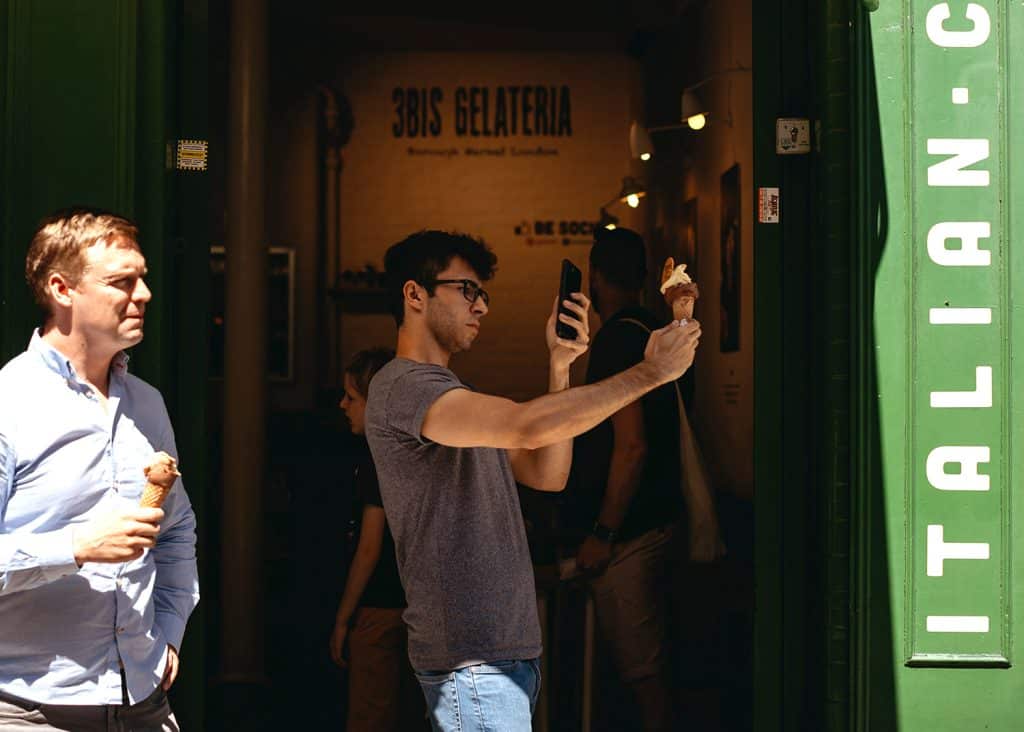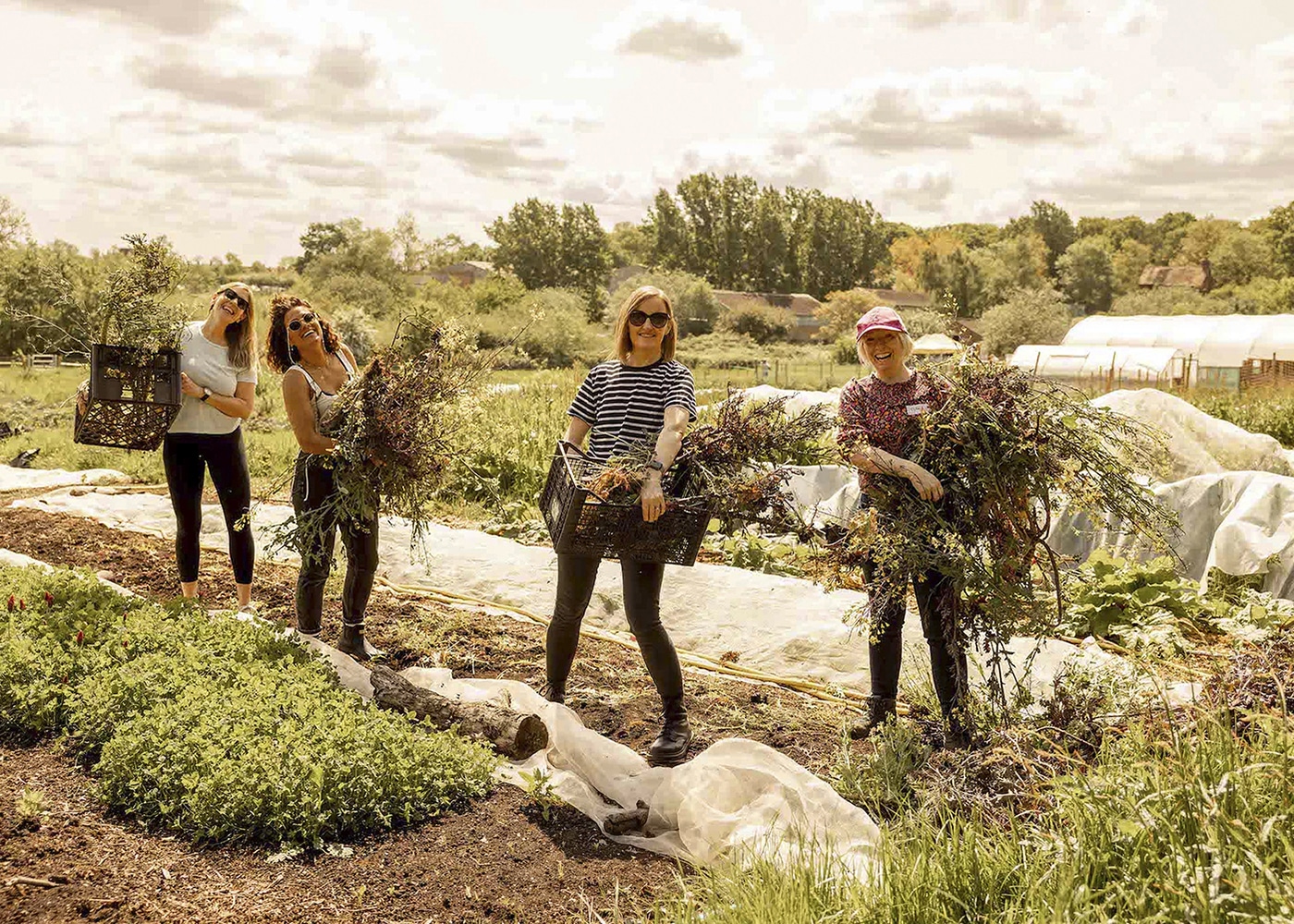Food for thought: the impact of social media
Food stylist and writer Kitty Coles answers our question: is social media transforming our relationship with food for the better?


“A PLATE OF PASTA IS NOT ENOUGH; IT NEEDS TO BE SWIRLING IN SLOW MOTION WITH CHEESE RAINING DOWN FROM ABOVE”
Borough Market, which is run by a charitable trust, exists “for community, the love of food and a better tomorrow”. This statement informs everything from our Food Policy to our work with local schools; it also sparks lots of questions about what we do and why we do it. This autumn, we’re throwing some of those same questions out to experts beyond the Borough Market community.
This week’s answer comes from Kitty Coles, a food stylist, writer and recipe developer whose images and videos, captured on her phone as she cooks, have garnered a significant following on Instagram.
Question: Is social media transforming our relationship with food for the better?
I grew up with both parents running a restaurant in the southwest of England – a converted pub with big open fires and daily-changing menus written on a chalkboard. My mum made all the desserts at home, so most days I’d come back from school to find every surface (and wall, and a bit of floor) covered in spun sugar, which I’d go around picking off as a snack. She taught me to make shortbread when I was about seven or eight, and by 11 I was baking it for the restaurant whenever they needed extra hands.
I had an extraordinarily food-focused childhood but there are almost no photos to show for it. The restaurant closed in 2016 when my parents retired, and barely a trace of it still exists. People came to eat, drink and sit by the fire without ever feeling the need to prove it online. They found out about it through word of mouth or simply by walking in. You had to call to make a booking – names and times written in a big reservation book – because Resy, OpenTable and SevenRooms weren’t a thing yet. There were no hashtags or @s, no Instagram stories or TikTok trends.

Fast forward to 2025 and that world feels like another planet. If I want to go to a restaurant now, even if it’s been personally recommended, I head straight to Google or Instagram to look at tagged images before booking. I want to see what the room looks like, what the food looks like, what everyone else has ordered. Sometimes it’s not about the menu but about the mood – the glow of the lighting, the plateware, the crowd. You can decide if a restaurant is “your thing” without ever stepping through the door.
In some ways, it’s incredible. I recently went to a big party thrown by the Topjaw social media channel. It felt like every cook and chef in London was in one room talking about how the algorithms had helped their businesses in ways they could never previously have imagined. One chef told me that after Topjaw featured their restaurant, there were queues down the road the very next day – and they’ve been there ever since.
There’s no denying that social media has transformed the way food is shared and discovered. I follow restaurants and cooks all over the world – small bakeries in Seoul, taco trucks in Los Angeles, grandmothers cooking in Sicilian kitchens. It’s made food more global, more inclusive, more immediate. A dish can go viral in Tokyo and be recreated in London within hours.
People can now build entire careers from their kitchen counters, often without any formal training, simply by being creative, consistent and clever online. That’s something my parents’ generation couldn’t have imagined – the idea that a phone, a good idea and a bit of persistence could launch a food career.
And even though I hate to admit it, I owe a lot to social media myself. I’ve built a portfolio that shows my style of cooking; it’s how I share my recipes and writing and connect with people who cook them. The biggest compliment I get is when someone says they recognised a dish as mine before even reading the caption – which, in a world of millions of food photos, feels like a small miracle.
But it has also changed the industry in ways that feel more complicated. The point, increasingly, is to show food rather than simply make it. A plate of pasta is no longer enough; it needs to be swirling in slow motion with cheese raining down in high definition. It’s surreal watching people cook for the camera, narrating each step as if rushing to get to the final “wow” moment.
A content creator I know once told me she doesn’t make something for her page unless it has that viral moment – and that most of her ideas come from TikTok or Instagram. She’ll see a recipe she likes, note how many likes it got, then recreate it at home in her own style. The inspiration starts from an image, not from mood or taste or seasonality. And while that might make for good engagement, it also feels like a loss. The food world used to move more slowly, more organically; ideas came from eating, travelling, talking, from what was ripe and ready that week. Now, trends decide what we cook before the produce does.

The irony, of course, is that some of the best cooking doesn’t translate well to video – too brown, too slow, too subtle. Delicious braised lentils in a mustard dressing won’t go viral, even though that’s one of my favourite things to eat.
Recipes used to have a kind of permanence – printed in magazines and newspapers, tucked into cookbooks, passed from hand to hand. Now they live in the feed for a day, maybe two, and then they’re gone. Maybe saved to “try one day”, but soon forgotten, buried among thousands of others.
As someone who’s worked in food for years, I’ve learned you have to set your own rhythm. The online world never stops, and if you’re not careful, you start cooking for it rather than from instinct. There’s a pressure to be constantly visible, to post something new every few days, to stay part of the conversation. But I do wonder what will happen to all the food content creators in 10 years’ time. Will they still be posting three recipes a week? Will they have evolved into something else? Or will they, like chefs before them, be forced to find another way of working?
Maybe that’s the real question: what happens when the noise quietens down – when the likes slow and the spotlight moves on? The best cooks will, I think, still be doing what they’ve always done: creating food for the joy of it, not the algorithm.


